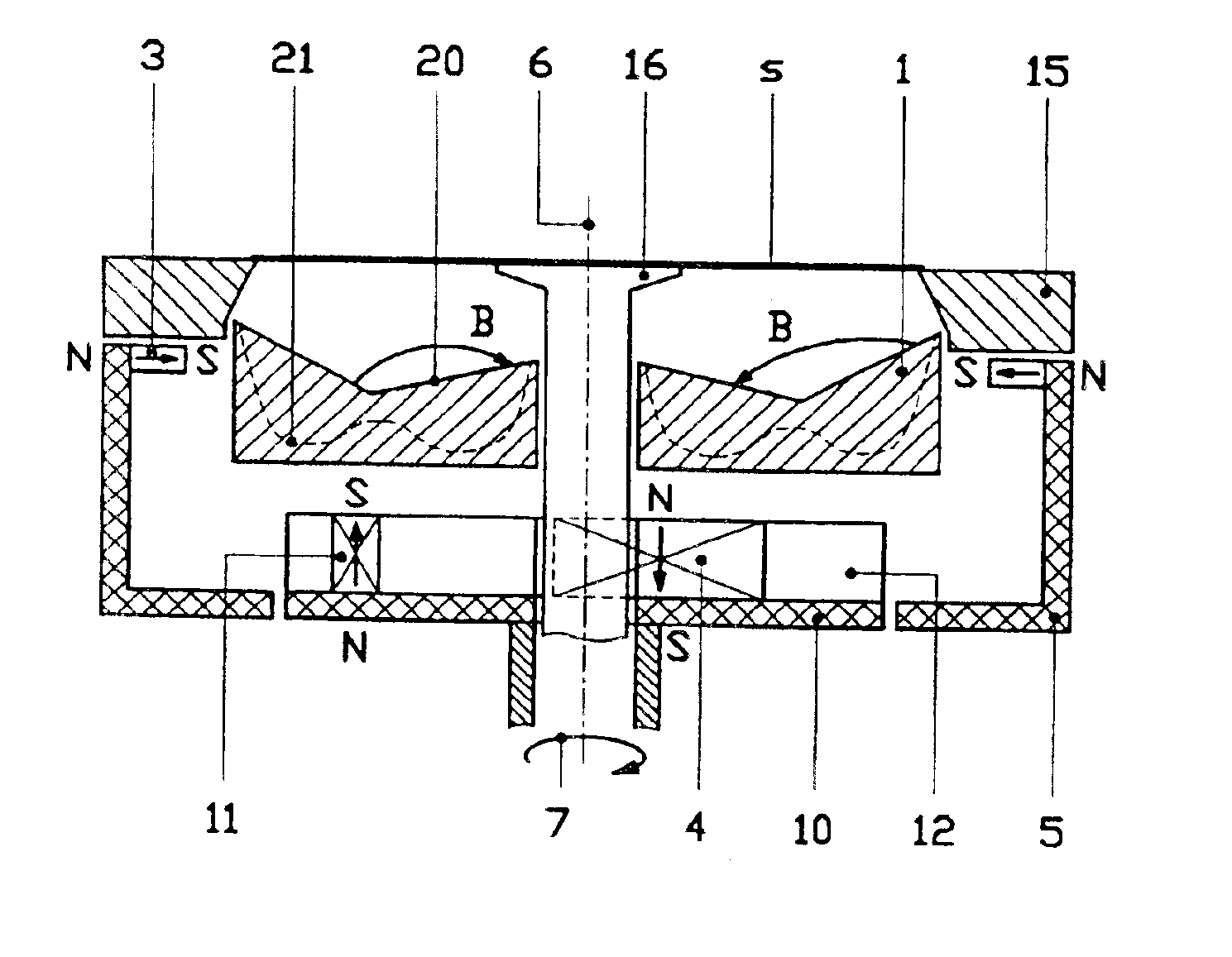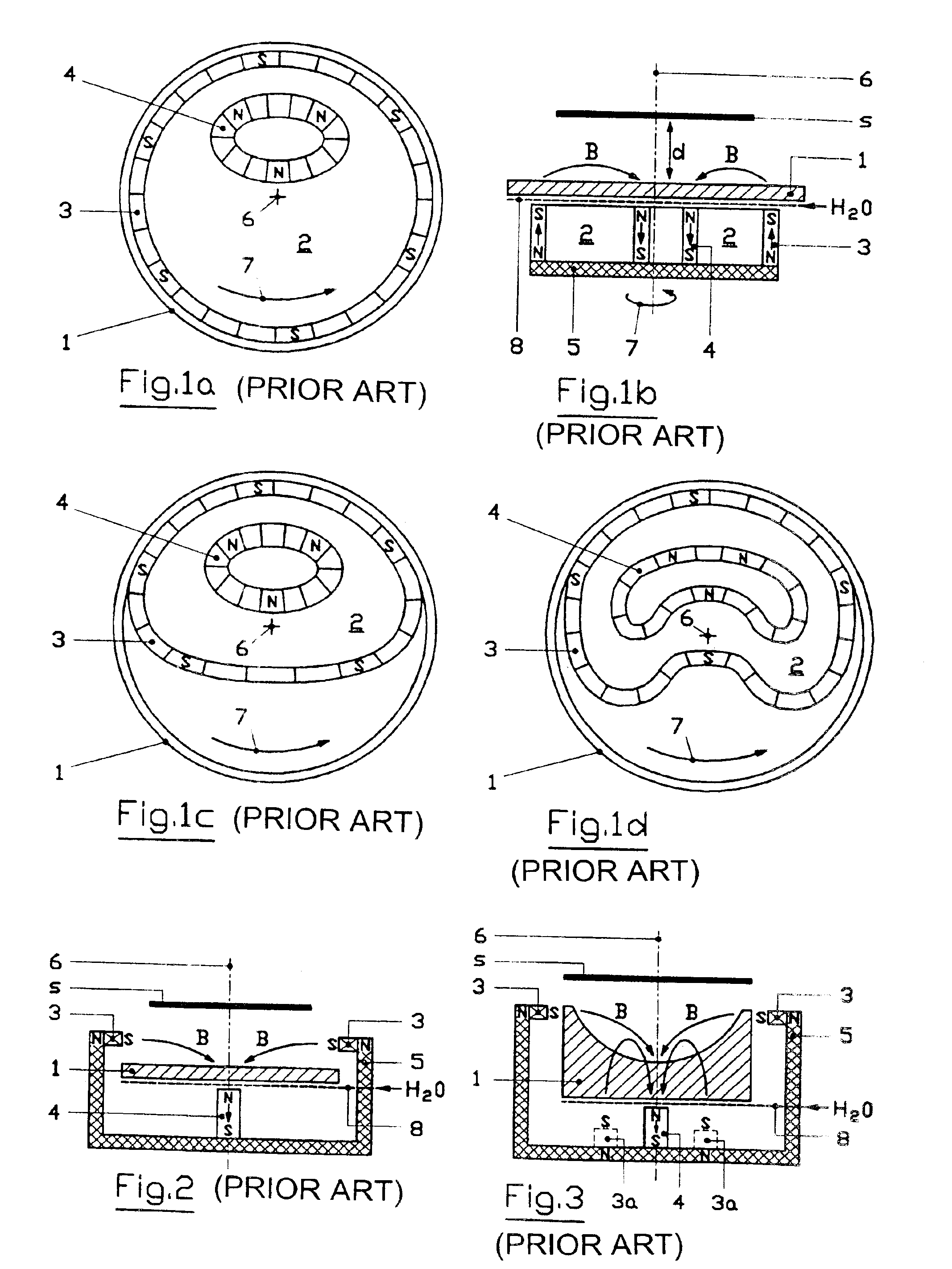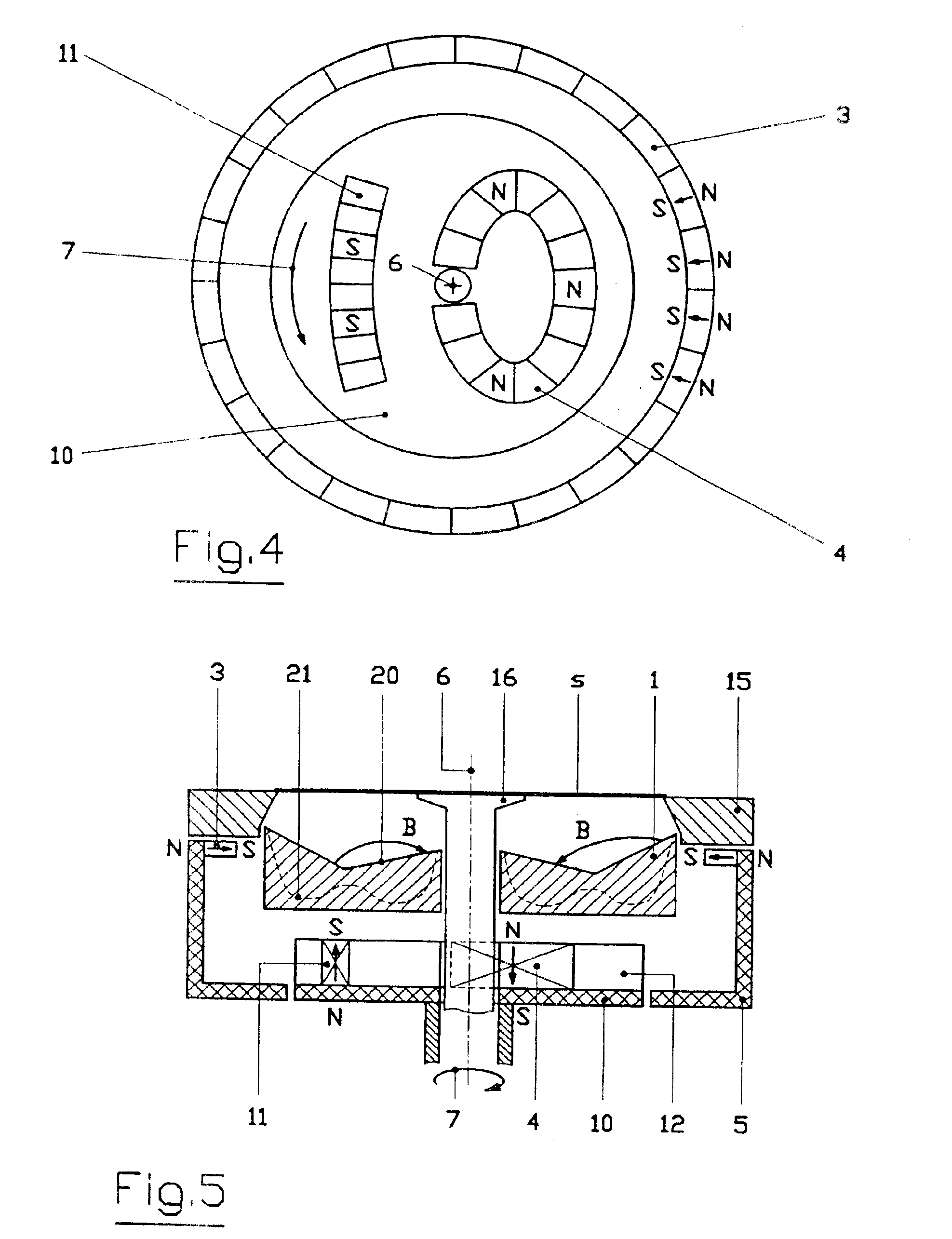Method for manufacturing a workpiece using a magnetron sputter source
a technology of magnetron sputter and workpiece, which is applied in the direction of electrolysis components, vacuum evaporation coatings, coatings, etc., can solve the problems of reduced utilization of target materials, special problems, and uneven thickness distribution of substrate layers, and achieve high sputter rates and good achievable distribution values. , the effect of high sputter ra
- Summary
- Abstract
- Description
- Claims
- Application Information
AI Technical Summary
Benefits of technology
Problems solved by technology
Method used
Image
Examples
Embodiment Construction
FIG. 5 depicts a magnetron sputter source in cross section and schematically. The sputter target 1 is developed as an annular target body, which has substantially a concavely developed sputter face 20. The sputter face 20 can per se also be developed such that it is planar, but the concave development is significantly more advantageous since with small substrate distance d the discharge volume comprises essentially the sputter face 20 and the substrate face s and thus the loss zone in the margin region is minimal. The round target 1 for coating storage plates s is advantageously developed such that it is annular which permits guiding an electrode 16 through in the center along the source center axis, which serves simultaneously as center mask for the disk-form substrate s. The substrate s is disposed at a small distance d from target 1 and the diameter of target 1 is only slightly greater than the diameter of substrate s. The discharge volume formed thereby is delimited by an electr...
PUM
| Property | Measurement | Unit |
|---|---|---|
| distance | aaaaa | aaaaa |
| diameter | aaaaa | aaaaa |
| distance | aaaaa | aaaaa |
Abstract
Description
Claims
Application Information
 Login to View More
Login to View More - R&D
- Intellectual Property
- Life Sciences
- Materials
- Tech Scout
- Unparalleled Data Quality
- Higher Quality Content
- 60% Fewer Hallucinations
Browse by: Latest US Patents, China's latest patents, Technical Efficacy Thesaurus, Application Domain, Technology Topic, Popular Technical Reports.
© 2025 PatSnap. All rights reserved.Legal|Privacy policy|Modern Slavery Act Transparency Statement|Sitemap|About US| Contact US: help@patsnap.com



